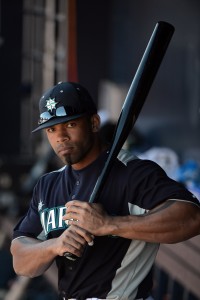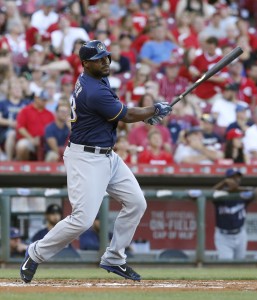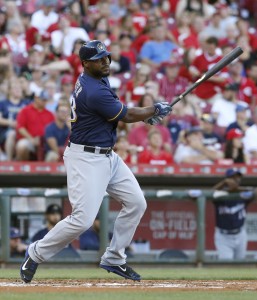Yesterday was the deadline for teams to decide whether to tender contracts to arbitration-eligible players, and they cut loose a number of intriguing players, adding to the free agent market at a number of key positions. Here’s a look at the most important non-tenders.
- Tyson Ross, Padres. San Diego cut Ross and five other players loose on Friday, adding a big name to a thin starting pitching market. Ross missed most of the 2016 season due to injury and had surgery for thoracic outlet syndrome in October, which figured to require a four- to six-month recovery period. He also wouldn’t have been cheap for 2017, making a projected $9.6MM. Nonetheless, Ross would be an interesting free agent even if there weren’t so little good starting pitching available. In 2015, he pitched 196 innings, with a 3.26 ERA, 3.9 BB/9 and an outstanding 9.7 K/9. He also has a career 56% ground ball rate.
- Chris Carter, Brewers. Milwaukee designated their first baseman for assignment last week, then officially non-tendered him yesterday. It isn’t typical to see a home run champ non-tendered, but Carter’s consistently high strikeout totals, consistently low batting average and lack of defensive value made him a tricky case, especially since those factors would have been weighted less heavily by the arbitration process than his gaudy home-run totals. We examined the Brewers’ case for non-tendering Carter back in October.
- Welington Castillo and Rubby De La Rosa, Diamondbacks. That the Snakes would non-tender a consistently productive starting catcher like Castillo rated as one of the tender deadline’s bigger surprises. Castillo batted a fine .264/.322/.423 in 2016 and looks like a strong addition to a rather thin free agent market for backstops. De La Rosa, too, is worth watching this winter — health concerns surely played a role in the Diamondbacks’ decision to cut him loose, and Tommy John surgery could be a possibility at some point after his recent stem cell treatment on his elbow. but De La Rosa’s blistering fastball, solid ground-ball ability and 9.6 K/9 in 2016 make him an intriguing free agent, particularly if teams are optimistic about his health.
- Ben Revere, Nationals. Washington’s decision to non-tender Revere (who we projected would make $6.3MM through the arbitration process this winter) came as no surprise after he hit just .217/.260/.300 while struggling with an oblique injury in 2016. Still, Revere had batted at least .294 in each of the four previous seasons, stealing 142 bases in that span. He’s also just 28. Teams interested in outfield help could, therefore, view him as a candidate to contribute next season.
- Seth Maness, Cardinals. St. Louis’ decision to non-tender Maness was surely due in large part to his health, as he had UCL surgery in August. He was, however, consistently productive as a sort of ground ball specialist in parts of four seasons with the Cardinals, producing a lifetime 3.19 ERA, 5.8 K/9, 1.7 BB/9 and 59.4 GB%. The Cards portray their decision to non-tender him as mostly a roster issue, as the addition of John Gant in the recent Jaime Garcia trade gave them additional bullpen help, and rookie Matt Bowman emerged in 2016 as a ground ball specialist in his own right.
- Jeff Manship, Indians. The 31-year-old righty produced an 0.92 ERA, 7.6 K/9 and 2.3 BB/9 for Cleveland in a terrific 2015 season and helped again in 2016, with a 3.12 ERA. He had long pitched mostly in the minor leagues before that, though, and his 4.6 BB/9 last season didn’t portend a high degree of future success.
- Vance Worley, Orioles. Worley’s teams seemingly continue to view him as a marginal player even as he remains consistently useful. In 2016, pitched 86 2/3 innings for Baltimore, generally pitching out of the bullpen but also making four starts. He produced a 3.53 ERA and a 48.1% ground ball rate, although his peripherals (5.8 K/9, 3.6 BB/9) headed in the wrong direction. He still looks like a credible long reliever, though, and his ability to start also helps.
- Jeff Locke, Pirates. The Bucs’ decision to part ways with Locke was likely an easy one after he produced a miseable 5.44 ERA, 5.2 K/9 and 3.1 BB/9 in 2016, ultimately losing his job in the rotation. Still, Locke has logged at least 127 1/3 innings in each of the last four seasons and could help a team in search of rotation depth this winter.


